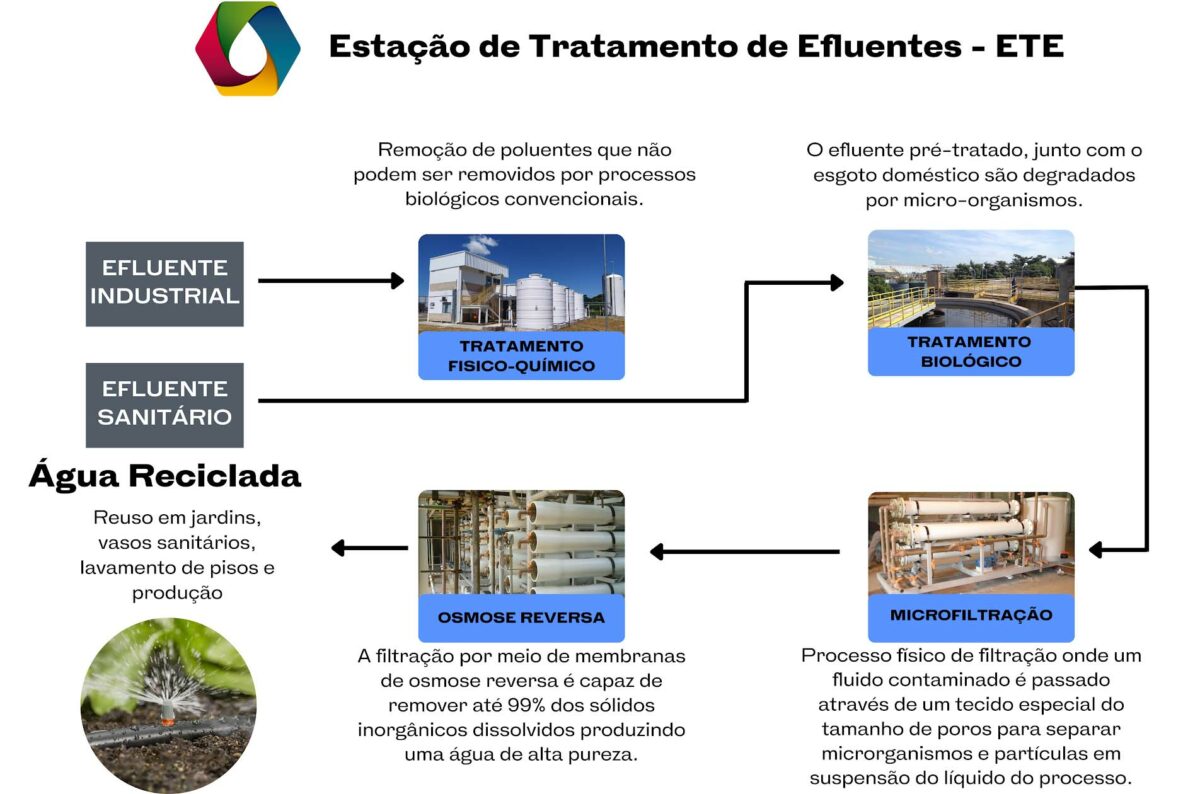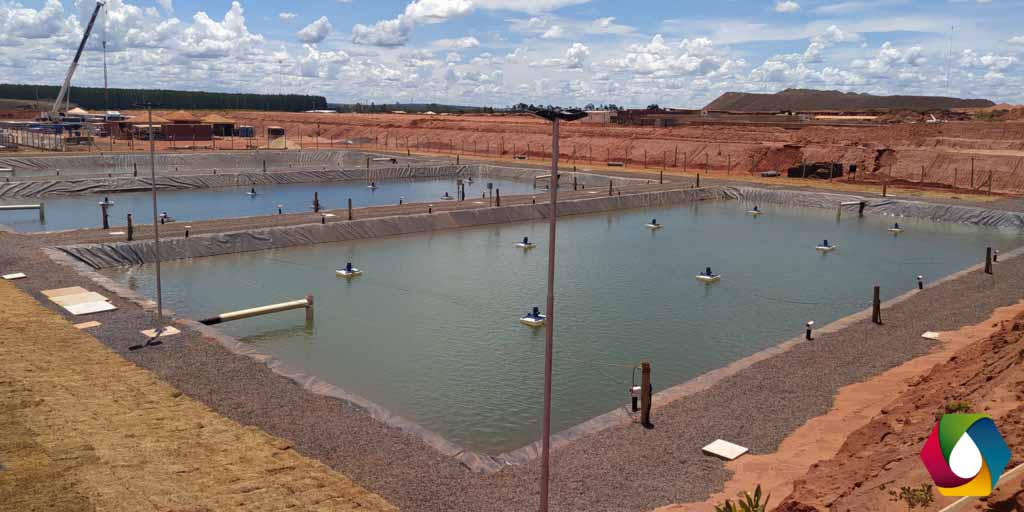Effluent Treatment Station (ETE) is a set of physical, chemical and biological processes that are used to remove contaminants and pollutants from wastewater before it is released into the environment. The aim is to make the water clean and safe for further use or to return it to the environment harmlessly. ETEs are commonly used to treat effluents from industries, communities and sewer systems.
Operation Process of an Effluent Treatment Plant (ETE)
There are many different processes that can be used in a wastewater treatment plant, but common basic processes include:
- Coagulation and flocculation: Addition of chemicals to help bind particles suspended in the effluent, forming flocs that can be easily removed.
- Decanting: Formed flakes are removed by decanting.
- Filtration: Unremoved particles are removed by means of filtration.
- Biological treatment: Microorganisms are used to decompose the organic pollutants in the effluent.
- Disinfection: effluent is treated with chlorine or other disinfectants to kill any remaining microorganisms.
- Final disposal: the treated effluent is discharged into a body of water or reused in some way.
The specific processes used in a wastewater treatment plant can vary depending on the type of wastewater to be treated and the treatment objectives.
Benefits of the Effluent Treatment Plant
- Environmental protection: A wastewater treatment plant helps remove pollutants and contaminants from wastewater before it is discharged into water bodies, which can protect aquatic ecosystems and the living things that depend on them.
- Water resources: Effluent treatment increases water quality, allowing its reuse and reducing pressure on water resources.
- Public health: Wastewater treatment helps to reduce groundwater contamination and prevent the spread of waterborne diseases.
- Improved quality of life: Wastewater treatment helps improve air quality and reduce bad odors associated with untreated effluents.
- Energy Generation: Some wastewater treatment processes, such as anaerobic digestion, can be used to generate energy from the organic pollutants in the effluent.
- Cost Savings: Wastewater treatment can allow water to be reused rather than discarded, which can lead to significant savings in potable water use and effluent disposal.
Applications
Applications of a wastewater treatment plant include:
- Industry: Effluent treatment stations are commonly used in the chemical, pharmaceutical, food, pulp and paper, metallurgy industries, among others, to treat and clean the effluents generated during the industrial process.
- Agriculture: Effluent treatment plants can be used to treat effluent generated by farms and livestock, including manure and cleaning water.
- Municipalities: Effluent treatment plants are used to treat the effluents generated by the residents of a city, including sewage, rainwater and rainwater.
- Mining: Effluent treatment plants can be used to treat effluents generated during mining, including mine water and drainage water.
- Ports and airports: Effluent treatment plants can be used to treat effluents generated by ports and airports, including cleaning water and drainage water.
- Ships: Effluent treatment plants are also used on ships to treat effluents generated on board, including sewage water and cleaning water.




